Mechelen
Jezuspoort ( Jesus Gate )
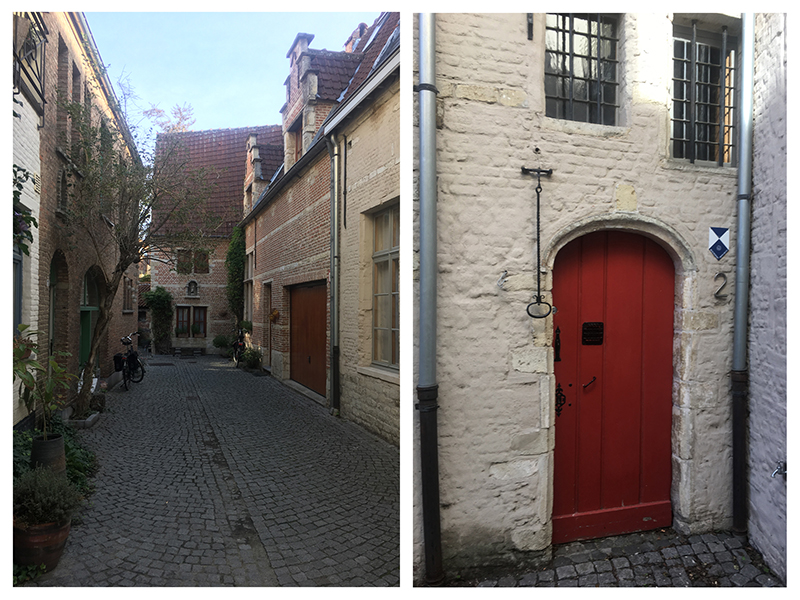
The Jezuspoort is a picturesque hidden gem in the city. You can find it halfway the Nonnenstraat and behind the gate there is a small blind alley straight from a fairy tale book. Old bricks, cobblestones and all sorts of small little details. The Jezuspoort is part of a bigger area full of biophilic specialties, the Groot Begijnhof. This neighbourhood dates from the 13th century and walking through it, you can taste the history.
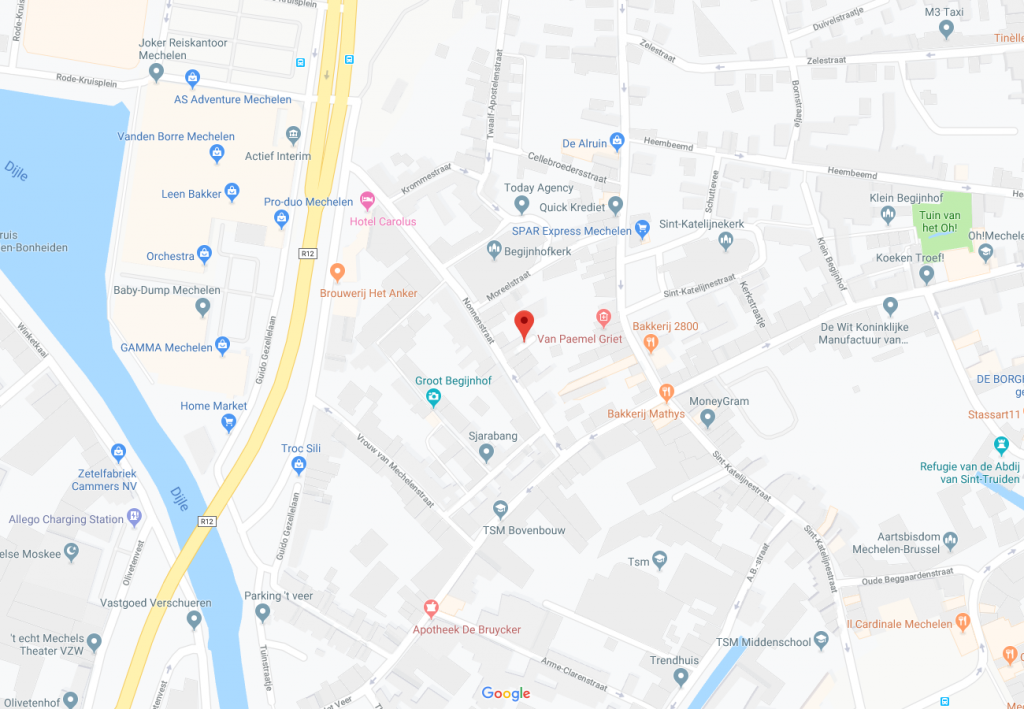
Korenmarkt
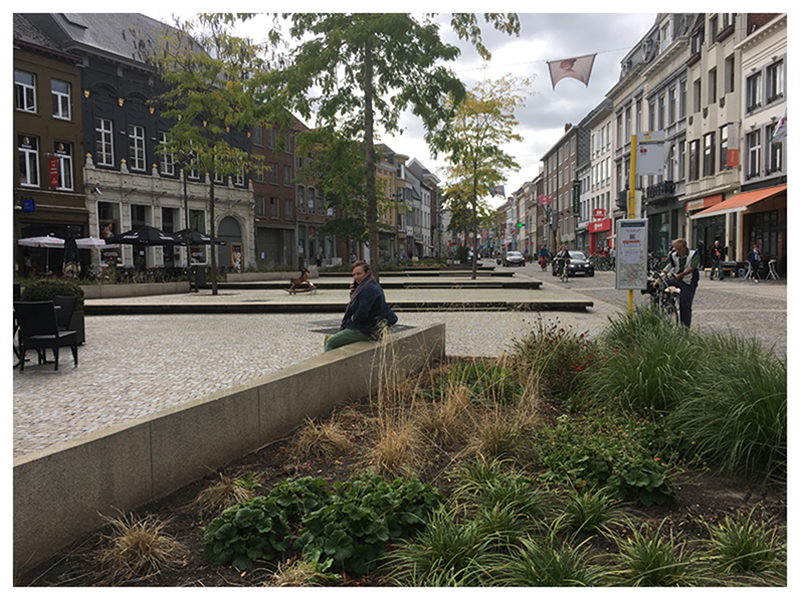
Design by: OKRA landschapsarchitecten www.okra.nl realised 2011-2012
Together with: Studiebureau Atelier Ruimtelijk Advies
Here, something special has been done. The square feels friendly and humane. The plants give the square a softness and you still get a sense of the history of the place. Presumably, this is the birthplace of Mechelen. Through the centuries this place has been used as a market, primarily as a grain market. Halfway of the previous century, the car took over. It became a parking and a leftover space.
In 2011 the square got a complete make-over. Room was made for pedestrians and the cars have to give priority to cyclists. Parking was solved in a garage. Trees were planted to soften the stony appearance and to improve the air quality and create some shade at the same time. In low planting planes, decorative grasses and flowering plants were placed to enliven the place. The square is slightly tilted; the part near the river is lower. To accentuate the height difference, lazy steps were used along the width of the square. The square is originally located on a sand ridge. To refer to this, the designers used sand coloured materials.
Special about this square is that it is also home to the oldest ‘Frietkot’ in town. This is a place where they sell the typical Belgium potato fries. So you can sit pleasantly at the square and enjoy a classic snack.
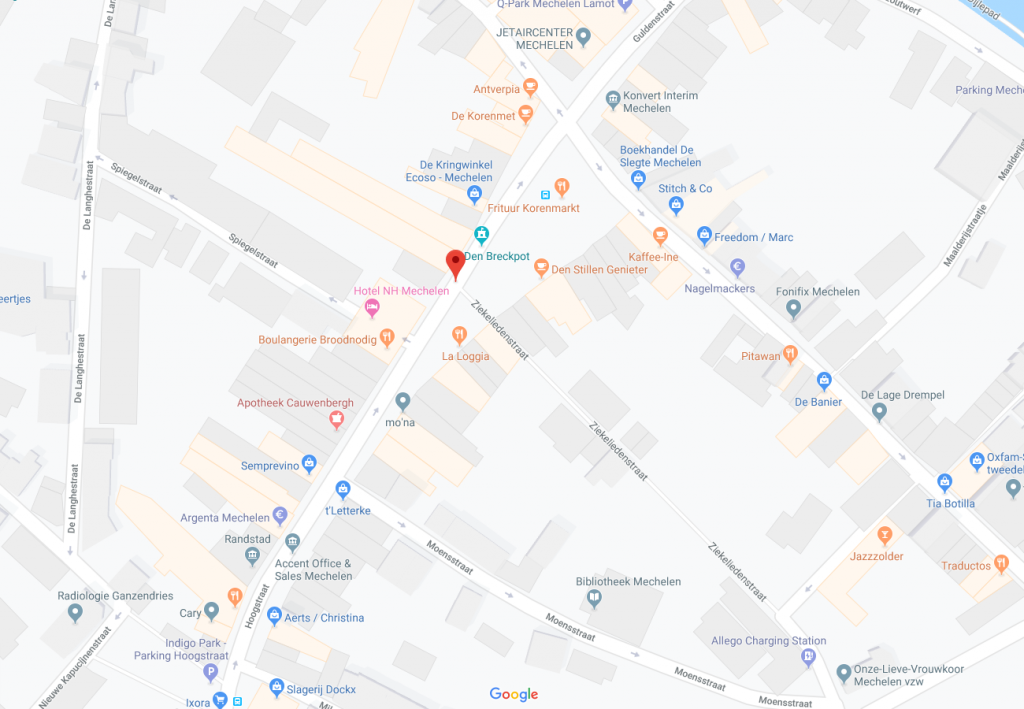
Vliet on the Botermarkt
The river Dijle flows across the city, but there are also a couple of smaller streams called ‘vlieten’. These are small city canals or side rivers of the Dijle. Through the years most of these vlieten have been muted or covered. A couple of years ago the city has successfully re-opened and restored a couple of vlieten. Down below you can read about three places where you can enjoy these small waters.
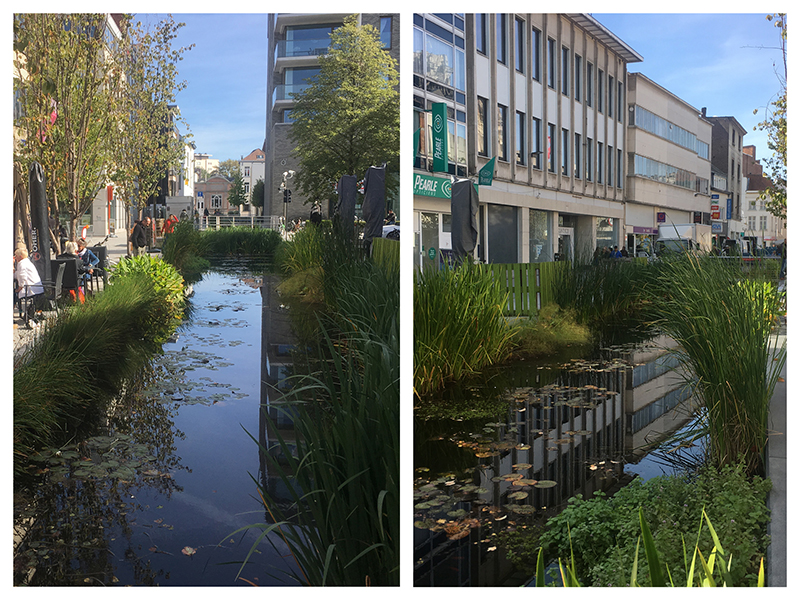
The Botermarkt is a lively meeting point for the locals. The teenagers have their own place. Children can play in the fountain. And everybody can enjoy the cafes and their seats outside.
Half of the square has been re-opened for the Vliet. At the waterside plants are growing. They give the Botermarkt a friendly appearance and make it even more pleasant to take a seat at one of the terraces. At the square, there are trees with multiple stems which flower twice a year.
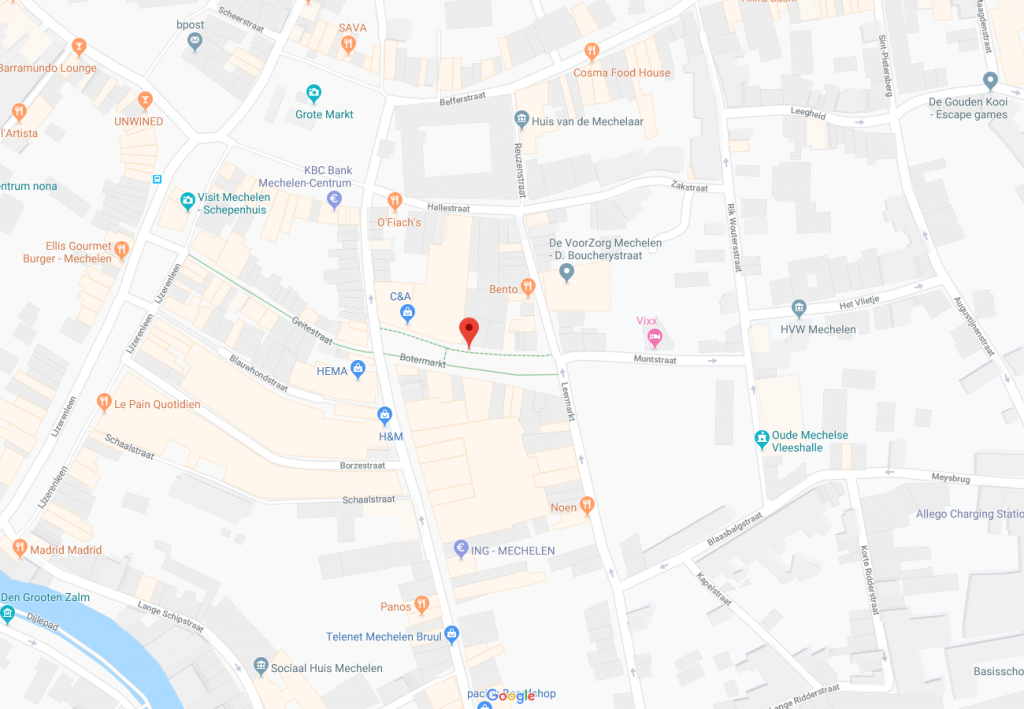
Rikwoutertuin
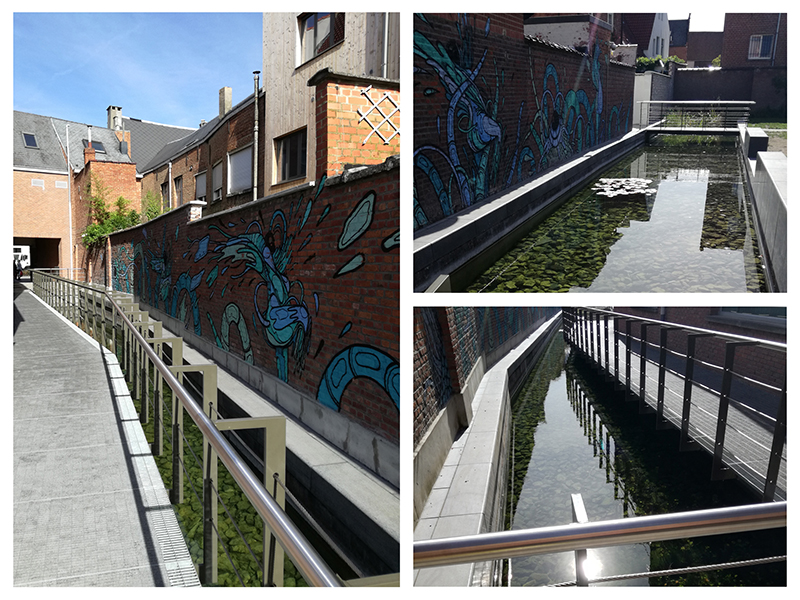
Design by: OKRA landschapsarchitecten www.okra.nl realised 2016
Entrance: Befferstraat and Rik Wouterstraat
The Rik Wouterstuin is a small public city-garden (700m2) and it feels like a hidden place in town. From the Befferstraat you enter the garden through a small entrance. Firstly you walk along a re-opened Vliet. The crystal clear water is shallow and you see stones on the bottom. This creates a peaceful effect. You walk along the Vliet into the garden. Next to the water, there is a stone rim. It differs in height and you can have a sit on it.
In the garden you can experience the contrast between straight lines and natural shapes. It is a place to stay for a while. Children can play in the small playground and the artworks make you drift off.
The garden is named after the artist Rik Wouters, who used to live in the neighbourhood. The artist is being honoured by a mural by artist Gijs Vanhee and a bronze self-portrait.
Openinghours
April till September: 9h – 21.45h
October: 9h – 19.45h
November till February: 9h – 18.45h
March: 9h – 19.45h
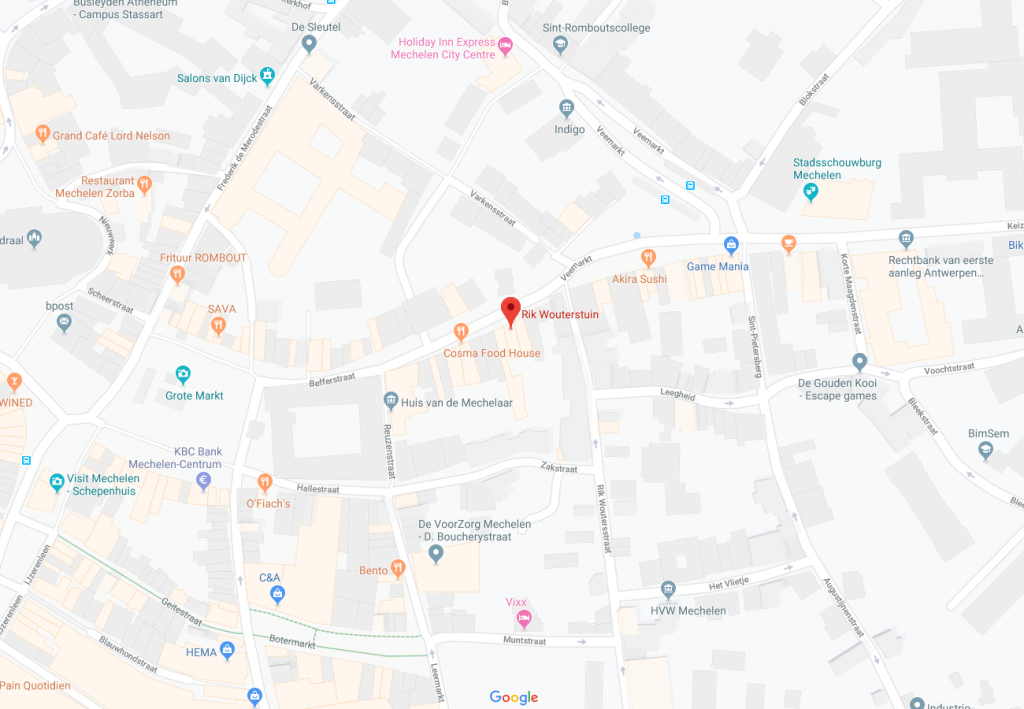
Waterpiano
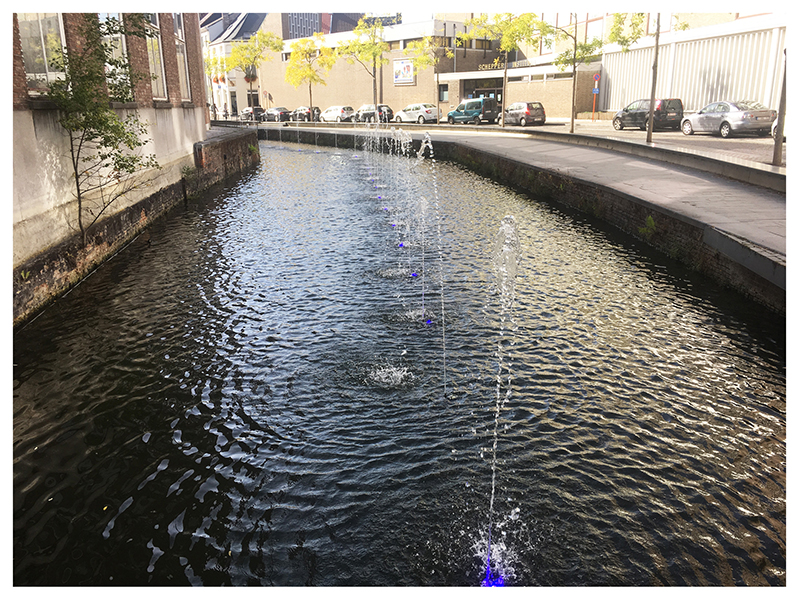
In the Vliet along the Melaan
Design by David Driessen
Next to the conservatory is a Vliet with special fountains. They respond to movements. The busier or the more you move the stronger the fountain will react. As a conductor, you can play the waterpiano. You can make it spray higher or move at a quicker rhythm.
The pavement is smartly placed half a meter lower than the road. As a pedestrian, you’ll experience the water even better.
In 2007 this part of Vliet has been re-opened thanks to the European project ‘Water in Historic City Centers’.
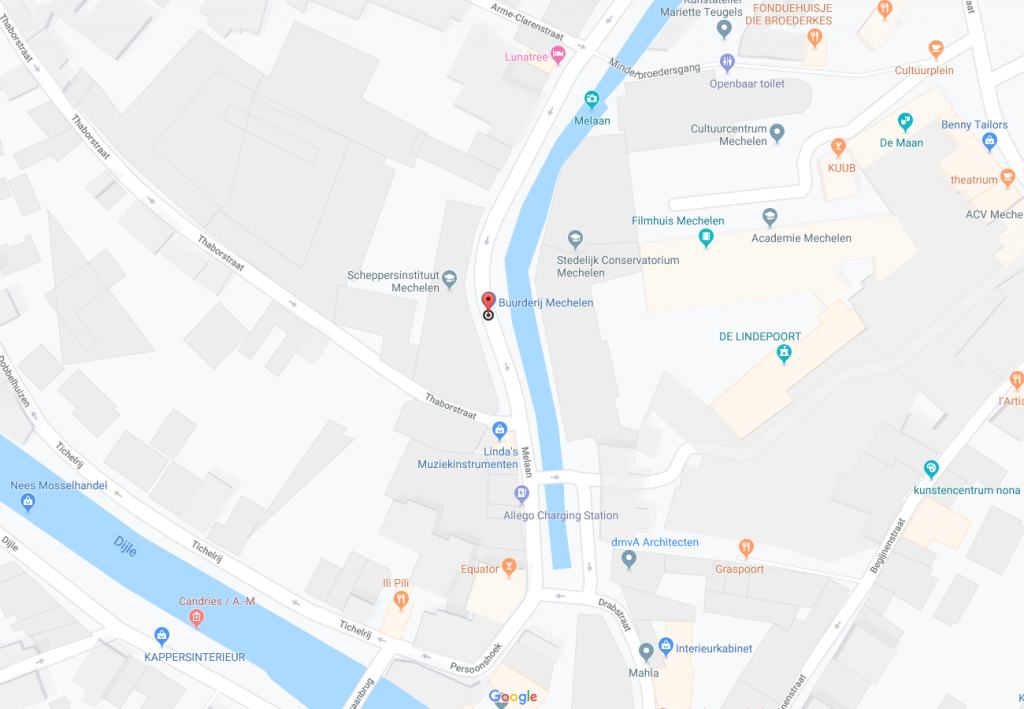
Wandelpad on the Dijle
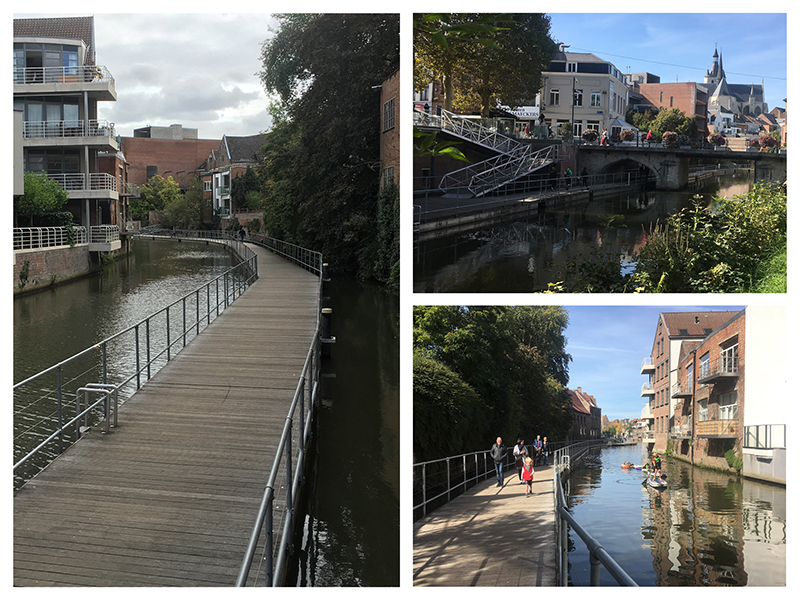
The river Dijle flows across Mechelen. The houses and streets are at a higher level. Most of the houses along the river are built with their backs towards the water. Because of this, the river is mostly hidden in the city. The wooden walkway is making the river more visible and part of the city again. You can experience the water from nearby and at the same time see the city from a different angle.
The wooden walkway floats, it sways with you while walking and this adds a cheerful experience to your walk. Along the walkway, you’ll see an abundance of butterfly bushes. They grow out of cracks in the old river walls. From the walkway, you can admire an eclectic mix of architecture. From centuries-old till contemporary.
The wooden walkway is located between the following two streets: Maalderijstraatje and Van Beethovenbrug.
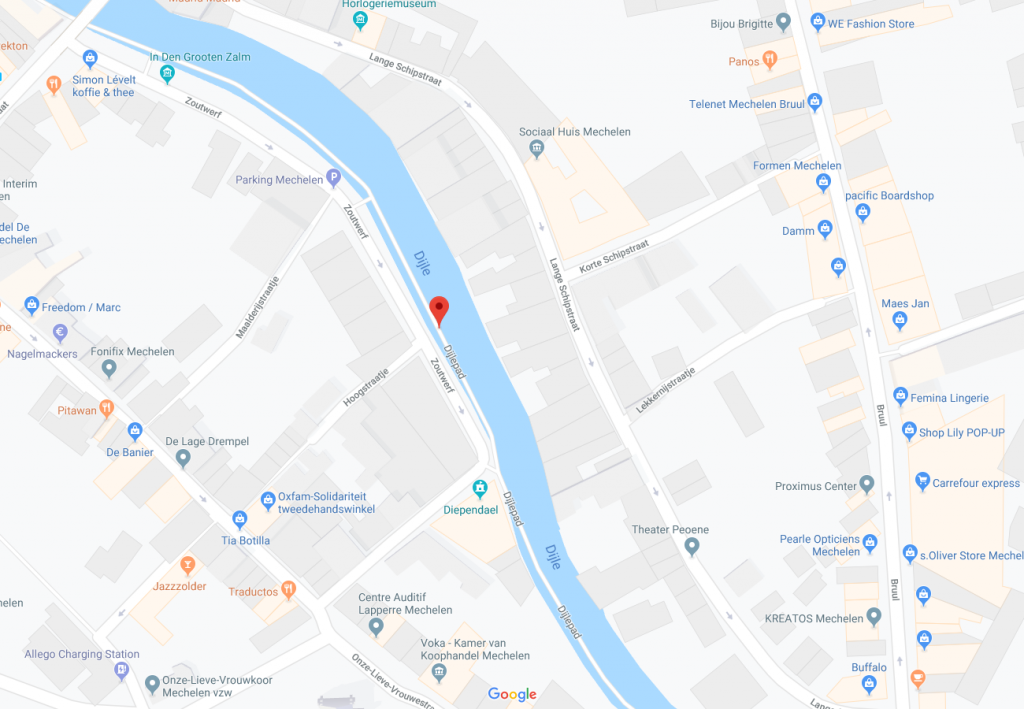
Grootbrug
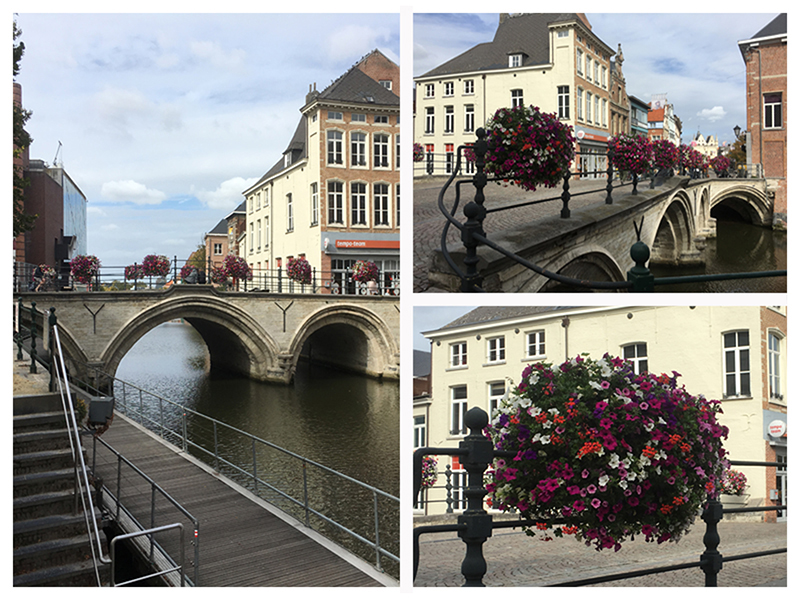
This bridge is for two reasons worth seeing. The bridge itself. Presumably, it’s the oldest stone bridge in Flanders and it dates from the 13th century. The arched bridge is made of sandstone and has 4 arches. Next to this, there are planters hanging from the iron railing full of abundantly flowering plants. You can’t walk across the bridge without getting a happy feeling.
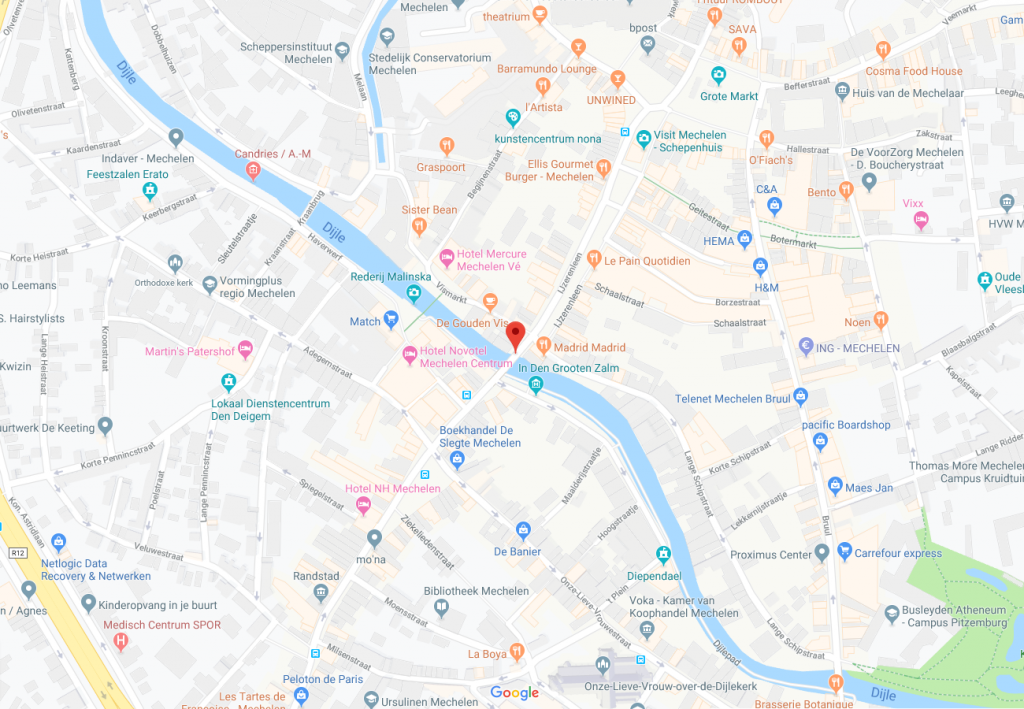
Kruidtuin
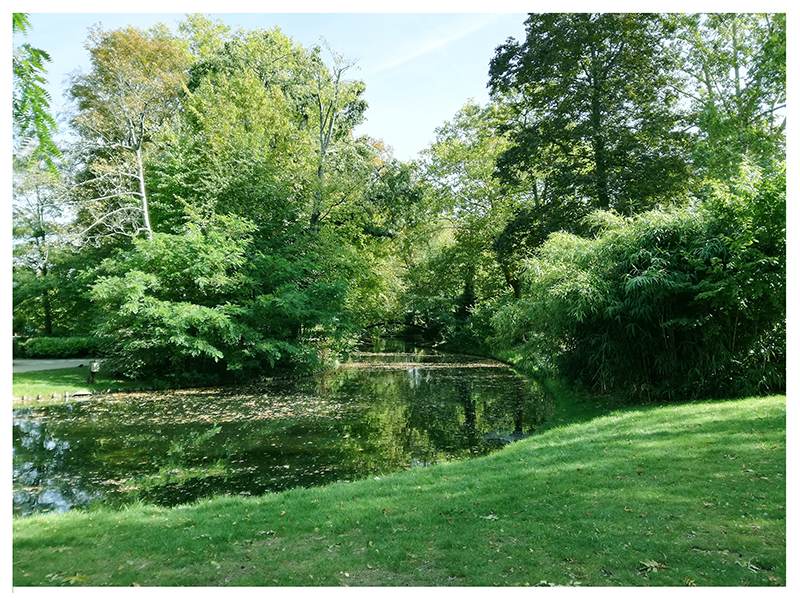
In the middle of the historic inner city, there is a green oasis, the Kruidtuin. Locals call the park lovingly ‘den Botanique’. Just as a lot of other parts in the city, this park originates from the 12th century, but it wasn’t until after WW I that it was opened for the public. There are no traces left of the initial design. In 1862 the park was made into an English landscape garden, designed by Louis Fuchs.
Within the park you can find a statue of herb doctor Dodoens. From 1541, he was for thirty years the city’s physician. Around his statue 250 different herbs have been planted.
Opening hours
March till October 8h – 21h
November till February 8h – 21h
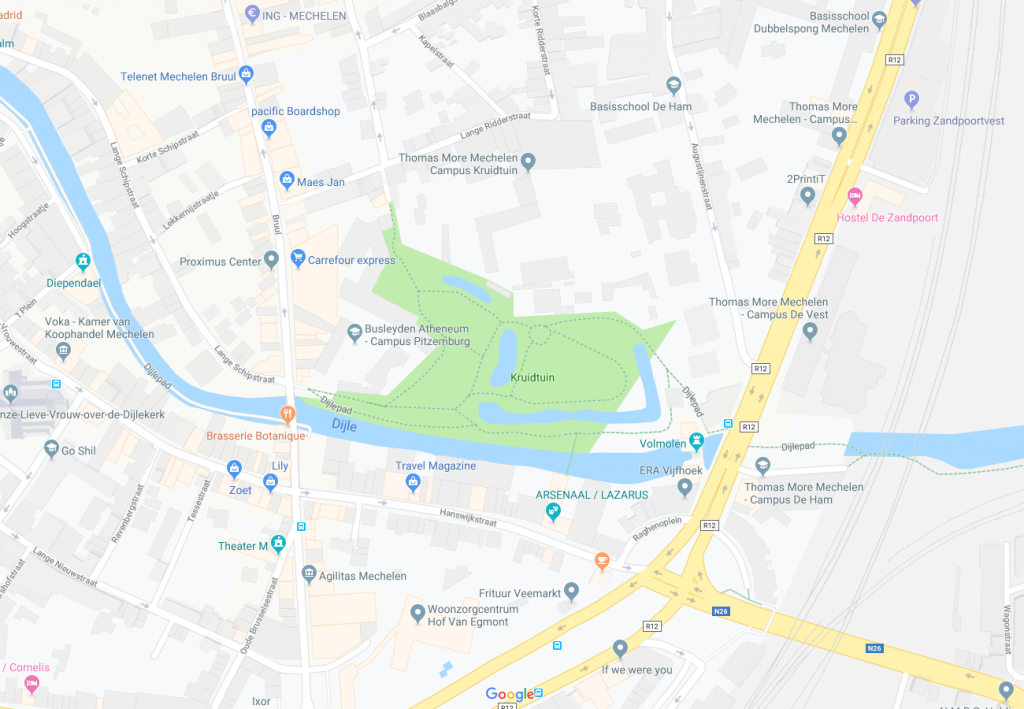
Floral Skullball
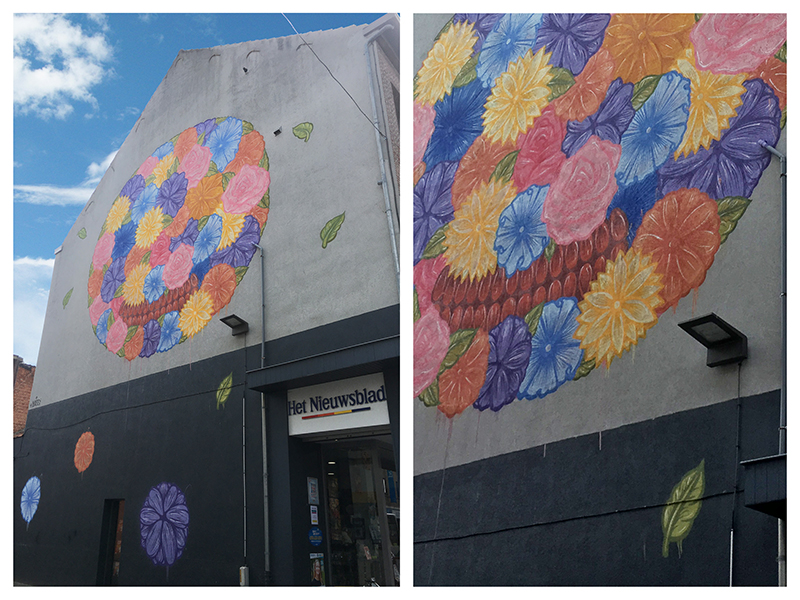
Designer: Mark Goss
Just around the corner of the Korenmarkt and above a paper-shop you will see a circle full of brightly coloured flowers. At first glance it’s a cheerful image: colourful and filled with flowers. Getting closer you can discover the rough edges of the artwork. The circle has brown teeth and the colours are dripping off the flowers. The mural is made by the British artist Mark Goss and is part of the project Mechelen Muurt (Mechelen Walls). The city-artist Gijs Vanhee (the same artist as at the Rik Wouterstuin) has invited several artists to enrich the cities blind walls. More eye-catching murals with biophilic qualities can be found at the following locations:
Underwaterdog by Smates, De Langhestraat
Alicia Duerne by Milu Gorrech, De Langhestraat
The Gift by Gijs Vanhee, Korenmarkt
Pelican by Dzia, Lekkernijstraatje
Mechelen Muurt https://toerisme.mechelen.be/mechelen-muurt
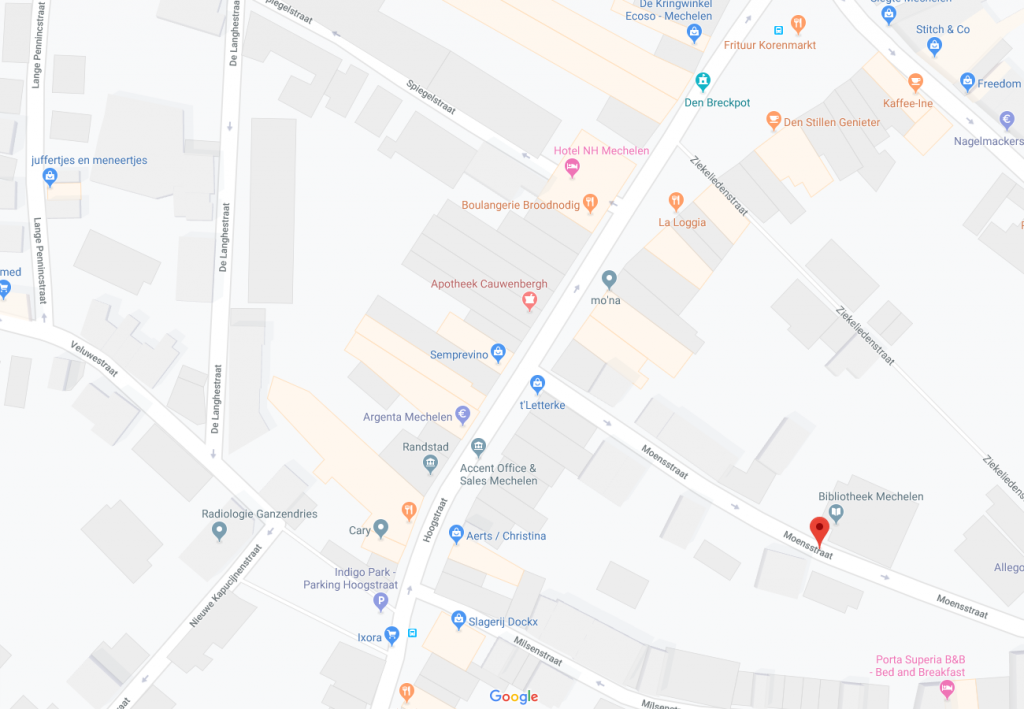
Flower pots in Mechelen
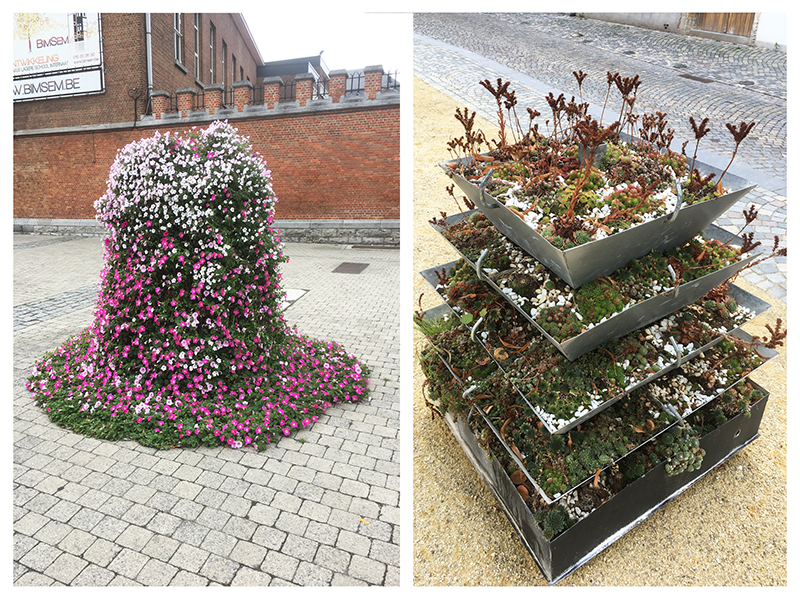
Throughout the city, you will find these flowering artworks. They cheer up the city with their bright colours. Wander through the city and you will spot them anywhere.
Casseien
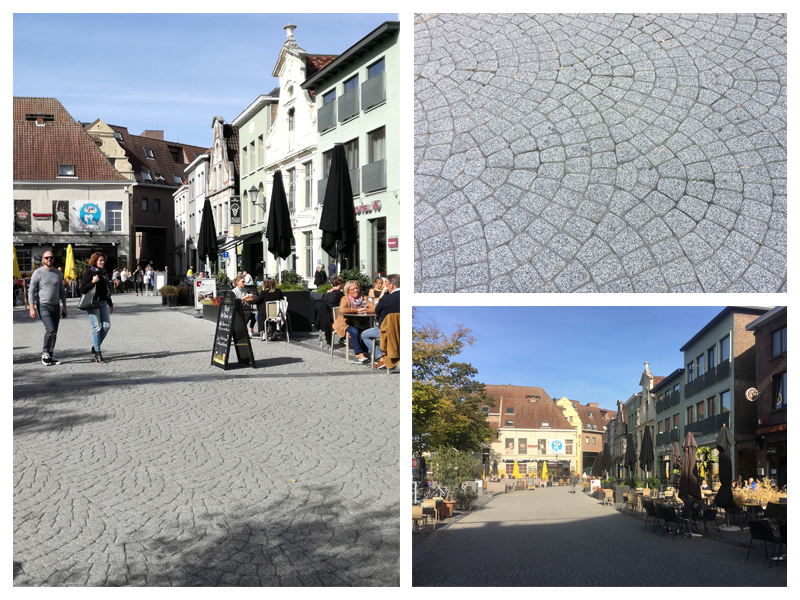
For some people, it’s the height of charm, for others it’s a nightmare, but it is absolutely a biophilic element that is present throughout the city: cobblestones. Be prepared. While walking from one beauty to the other, don’t go out in your fancy shoes, but treat your feet on some comfortable shoes.

Leave A Comment